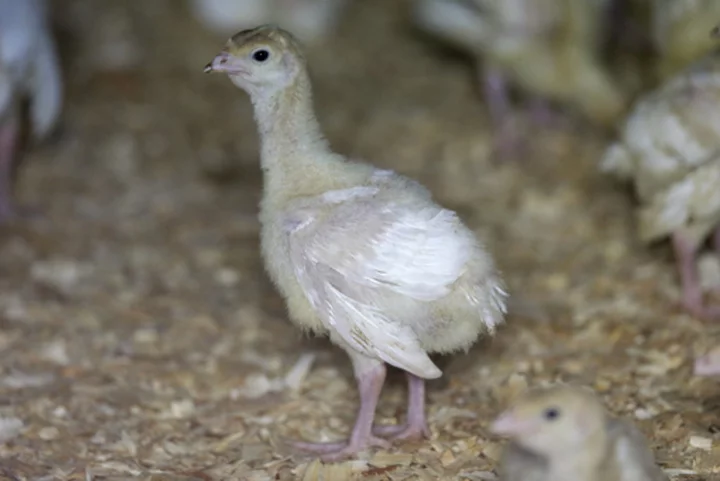MINNEAPOLIS (AP) — Highly pathogenic bird flu has made its first appearances in U.S. commercial poultry flocks this season, affecting one turkey farm in South Dakota and one in Utah.
The U.S. Department of Agriculture reported that avian influenza, which is deadly to commercial poultry, was confirmed in a flock of 47,300 turkeys in Jerauld County, South Dakota, on Oct. 4 and at a farm with 141,800 birds in Utah's Sanpete County last Friday.
The outbreaks are the first reported among commercial flocks in the U.S. since the disease struck two turkey farms in the Dakotas in April. Infected flocks are normally destroyed to prevent the flu's spread, and then the farms are decontaminated.
Before last week, the only reports of bird flu in recent months in the U.S. in recent months were sporadic appearances in backyard flocks or among wild birds such as ducks, geese and eagles. While wild birds often show no symptoms of avian influenza, infections in them are a concern to the poultry industry because migrating birds can spread the disease to vulnerable commercial flocks.
Bird flu last year cost U.S. poultry producers nearly 59 million birds across 47 states, including egg-laying chickens and turkeys and chickens raised for meat, making it the country's deadliest outbreak ever, according to USDA figures. The outbreak caused spikes in egg and turkey prices for consumers and cost the government over $660 million.
The toll from a 2015 outbreak, deemed the most expensive animal health disaster in U.S. history with over $1 billion in costs to the government, was nearly 51 million birds in 15 states.
Bird flu infections in humans are relatively rare and aren’t considered a food safety risk. But as it hits other species, including some mammals, scientists fear the virus could evolve to spread more easily among people. Cambodia this week reported its third human death from bird flu this year.
Agriculture officials consider this year's cases to be part of last year's outbreak, which reached the U.S. in February 2022 after spreading in Europe. The U.S. has imposed periodic restrictions on poultry imports from Europe to limit the potential for spread.
“Were just encouraging bird owners to make sure they're increasing their biosecurity practices because avian flu is still out there and it's easy to contract," said Bailee Woolstenhulme, spokesperson for the Utah Department of Agriculture and Food.
However, producers have kept their biosecurity tight for several years, and there is little more that farmers can do beyond the steps they have already taken to try to keep the virus out of their flocks. The main strategy is to prevent droppings of wild birds from being tracked into poultry barns on workers' footwear and clothing, or from hitchhiking on farm equipment, mice, small birds and even dust particles.
This was Utah’s first case this year, Woolstenhulme said, but 16 turkey farms, one egg farm and several backyard flocks were affected in the state last year.
South Dakota producers lost nearly 4 million birds last year. Iowa, the hardest-hit state, with nearly 16 million birds lost, hasn't recorded a case since March.









